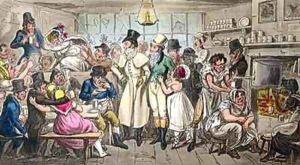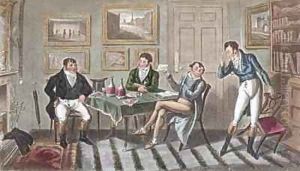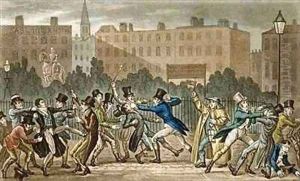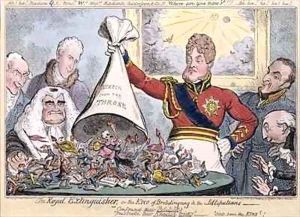G. and I. Cruikshank Paintings
George Cruikshank and Isaac Cruikshank were prominent figures in the world of British caricature and illustration during the 18th and 19th centuries. Isaac Cruikshank, the father, was born in 1756 in Scotland and moved to London, where he established himself as a skilled caricaturist and engraver. His works were known for their political and social satire, contributing significantly to the public discourse of his time. He collaborated with leading publishers and was active in a period marked by intense political reform and social change in Britain. Isaac's death in 1811 marked the end of an era, but his legacy continued through his sons, especially George Cruikshank.
George Cruikshank, born in 1792, was one of Isaac's sons who followed in his father's artistic footsteps but eventually surpassed him in fame. George began his career working under his father's shadow but soon carved out his own niche, becoming one of the most influential and celebrated British caricaturists of the 19th century. His early work was heavily involved in political and social satire, much like his father's, but as his career progressed, he became more involved in book illustrations. George Cruikshank's versatility allowed him to transition from satire to more narrative-driven illustrations, making significant contributions to the popular literature of his time.
George's work with Charles Dickens, particularly the illustrations for 'Oliver Twist,' remains among his most celebrated contributions to English literature. His ability to capture the essence of Dickens's characters and the Victorian era's social conditions helped to visualize the novelist's works for a wide audience. Beyond Dickens, Cruikshank illustrated for a multitude of other authors and produced a vast body of work that included fairy tales, social reform pamphlets, and temperance propaganda, reflecting his personal commitment to social issues later in life.
Despite their different lifespans and careers, the Cruikshanks, Isaac and George, played pivotal roles in the development of British caricature and illustration. Isaac laid the groundwork in the late 18th and early 19th centuries with his political and social satires, while George expanded and evolved the art form into narrative illustration, contributing to the Victorian era's cultural and literary heritage. Their combined legacies offer a fascinating glimpse into the power of visual satire and storytelling during a transformative period in British history.



